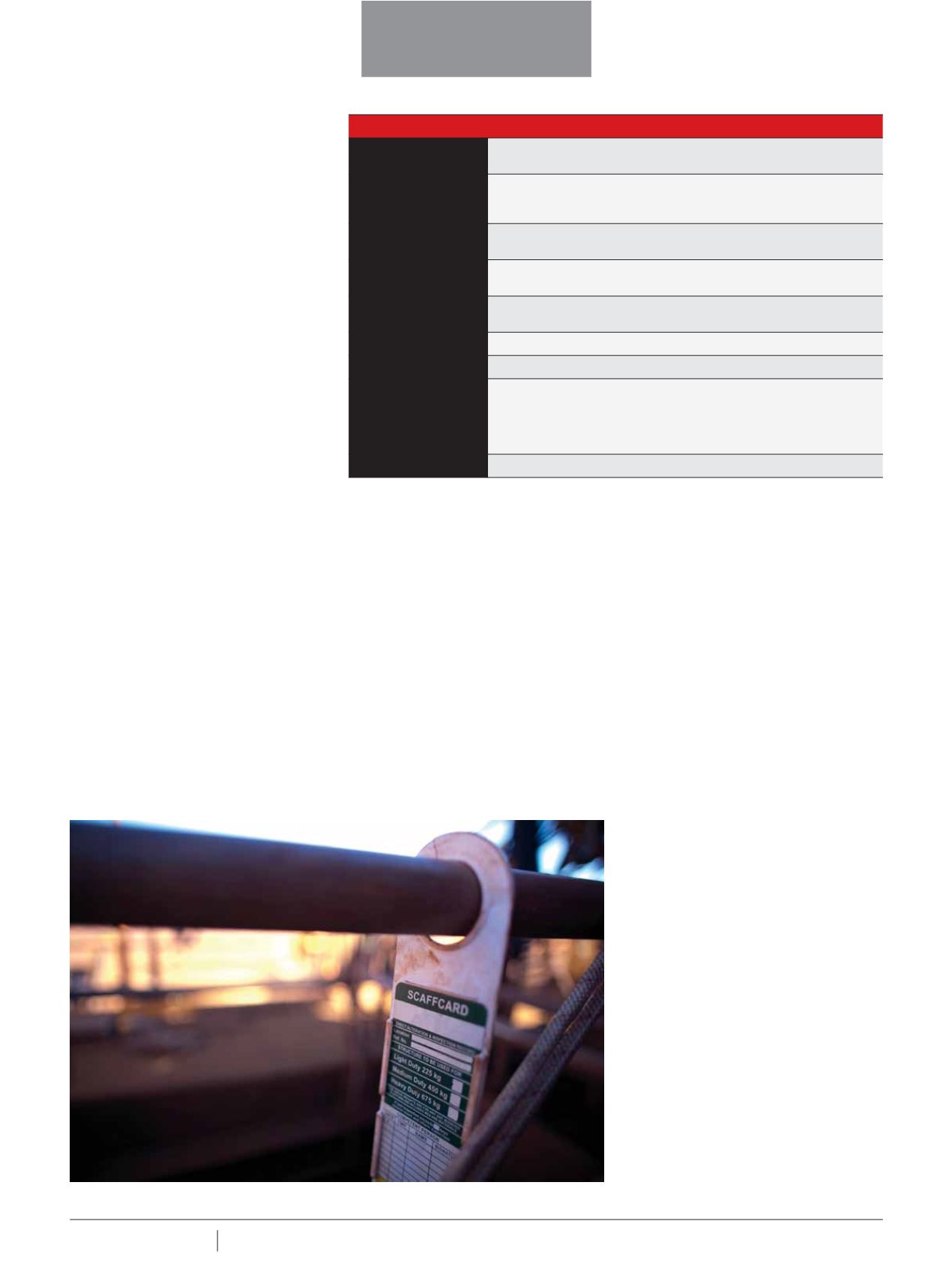

1 2
BUILDING CONNECTION Spring 2019
For instance, according to a SafeWork
NSW spokesperson, SafeWork NSW
undertook a construction industry safety
blitz in 2018, visiting over 1,000 sites
statewide to focus on the risk of falls from
heights, including falls from scaffolds.
“To further focus on scaffold safety,
SafeWork NSW commenced ‘Operation
Scaff Safe’ on 1 April 2019 to ensure:
∫ scaffolds are built to Australian
Standards and are not missing
components;
∫ those erecting, dismantling or
altering scaffolds (where the risk
of an object or person falling is four
metres or more) hold the correct HRW
[high-risk work] scaffolding licence;
and
∫ scaffolds remain safe and compliant
throughout the build process,” the
spokesperson said.
“SafeWork NSW inspectors address
most scaffolding non-compliance
issues through the issuing of prohibition
and/or improvement notices,” the
spokesperson added.
“For matters involving a high risk
or failure of the scaffold, they are
investigated further for potential legal
action.
“SafeWork NSW currently has three
matters in this category and has had
three additional matters in the last five
years.”
Similarly, WorkSafe ACT typically
pursues approximately 10 punitive
actions (including legal prosecutions)
per year in response to scaffolding
offences.
At the other extreme, Work Health
and Safety Queensland (WHSQ),
according to a spokesperson, “issued
statutory notices to more than 1,200
construction sites between January
2017 and April 2019 for violations of
scaffolding regulations.”
An objective observer might say
the latter figure is both reassuring
and alarming: on the one hand, strict
action in response to scaffolding safety
breaches is positive; on the other hand,
such high rates of non-compliance is
cause for concern.
LICENSING
A licensing system is meant to serve
as a safety net in relation to the safe
erection, alteration or dismantling of
scaffolding involving high-risk work.
There are three classes of scaffold
HRW licenses: basic, intermediate
and advanced. In most jurisdictions,
licences are required in circumstances
where a person or object could fall four
metres or more.
“This is a national requirement
and SafeWork NSW HRW licences are
mutually recognised across Australia,” a
SafeWork NSW spokesperson said.
While other jurisdictions, including
Victoria, adhere to these licensing
guidelines, WA does not: “An installer
needs to be licensed if the scaffold
involved has more than an 11-metre
fall,” a WorkSafe WA spokesperson
told us, underlining the regulatory
disunity confronting nationally focused
contractors and suppliers.
To make matters even more
complicated, ongoing equipment
innovation means prescriptive
Australian/New Zealand Standards
are under constant threat of
obsolescence.
TABLE 2: SCAFFOLDING: COMMON PROBLEMS (BY STATE/TERRITORY)
REGULATOR
Main Scaffolding Issues Found by Inspectors (by State/Territory)
(as reported independently by each regulator)
WORKSAFE ACT
Non-compliant adaptations of cup lock and clip lock systems.
Handrails not properly in place. Timber boards of poor quality.
Substandard workmanship.
SAFEWORK NSW
Non-compliance with standards, including missing components such
as planks, ledges and hop-ups.
NT WORKSAFE
Missing components, scaffold tie-ins, falling objects and lack of
encapsulation.
WORKPLACE HEALTH &
SAFETY QUEENSLAND
Main risks are risk of fall and being hit by falling objects.
SAFEWORK SA
No response
WORKSAFE TASMANIA
No response
WORKSAFE VICTORIA
Incomplete scaffolding and work decks.Overloaded scaffold bays.
Alterations made by unauthorised persons on site that compromise
the integrity of a scaffold. Failure to regularly inspect scaffolding to
ensure it remains fit for purpose, for example after exposure to the
elements or being hit by falling objects or machinery.
WORKSAFE WA
Footings and tie-ins.
Scaffcards provide a safety tagging system to users and regulators.
COVER STORY
SCAFFOLDING
















